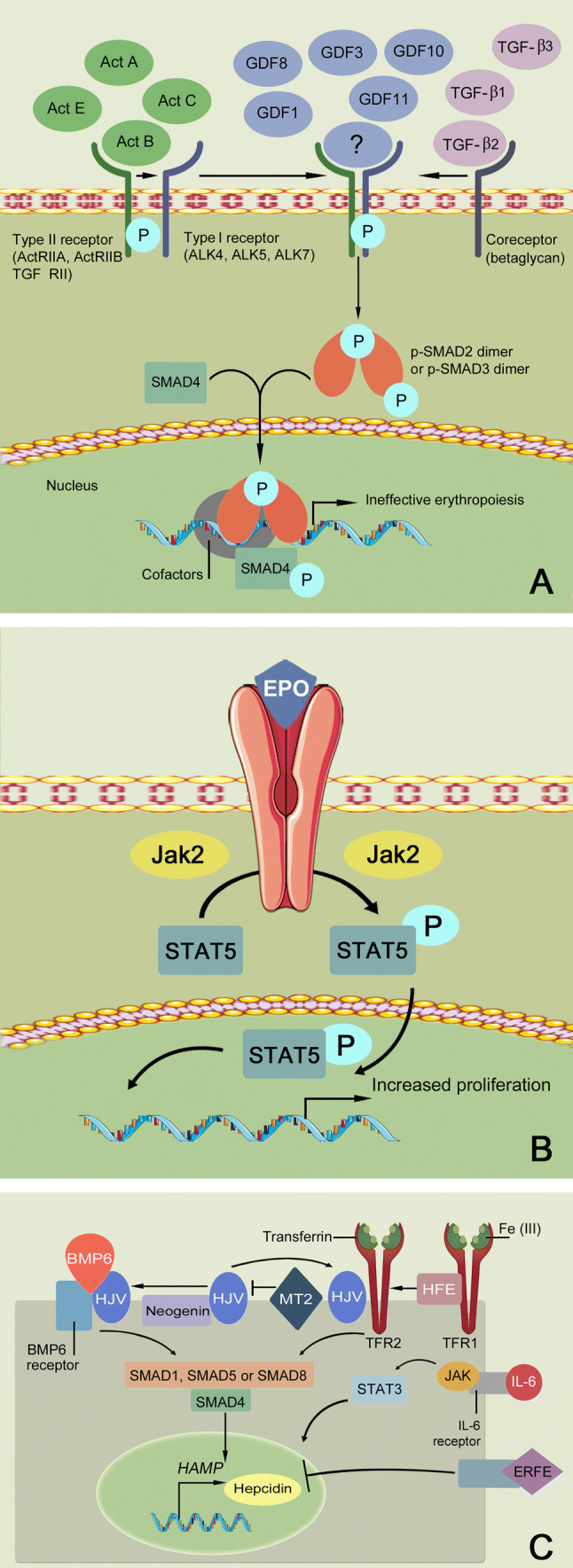Fig. 1.

Targets of new therapeutic options in beta-thalassemia. a SMAD2/3 signaling pathway is the target of activin receptor ligand trap molecules. Members of the transforming growth factor β (TGF-β) superfamily ligands binding leads to the multimerization of type I and type II receptors. Upon the activation of the type I receptor, phosphorylation of SMAD2/SMAD3 takes place. This leads to dissociation from the type I receptor and oligomerization with SMAD4 to form a complex that translocates into the nucleus, thereby regulating the gene and promoting a cellular response with inhibition of late-stage erythropoiesis. Luspatercept and sotatercept prevent the binding of the ligand, thus inhibiting this pathway and promoting late-stage erythropoiesis. b JAK2/STAT5 signaling pathway is the target of JAK2 inhibitors, e.g., ruxolitinib. In β-thalassemia, erythropoietin (EPO) synthesis is increased, leading to activation of the JAK2/STAT5 pathway, thus altering the proliferation and differentiation of the erythroid progenitors. c Regulation of hepcidin expression in hepatocytes is the target of mini-hepcidin and TMPRSS6 inhibitors. The binding of bone morphogenetic protein 6 (BMP6) and hemojuvelin (HJV) to the BMP6 receptor leads to a downstream signaling mechanism via SMAD1, SMAD5, or SMAD8, which activate SMAD4. SMAD4 will then stimulate the transcription and expression of hepcidin (encoded by HAMP). The SMAD signaling pathway is also regulated by other molecules like transferrin receptor 2 (TFR2) upon its association with human hemochromatosis protein (HFE) and HJV. Transmembrane protease serine 6 (TMPRSS6) negatively modulates HAMP expression by cleaving HJV from the cell surface. The secretion of erythroferrone (ERFE) inhibits hepcidin expression, the signaling pathway of which is currently unknown. The administration of synthetic hepcidins and the inhibition of TMPRSS6, which ultimately increases hepcidin expression, result in ferroportin internalization and iron restriction. Ferroportin inhibitors (not shown) are another class of drugs that induce iron restriction (see Sect. 4.2)
